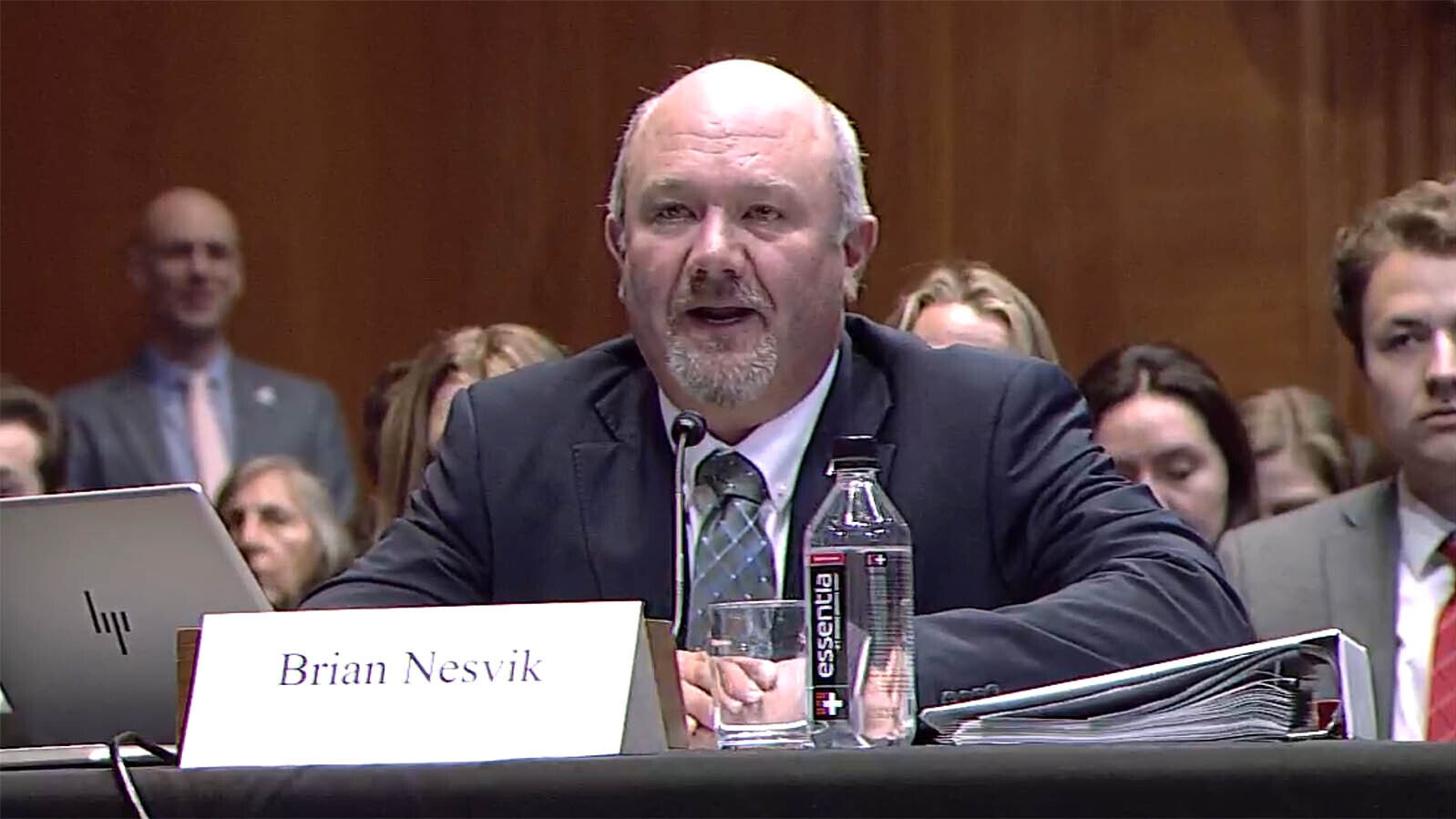Nobody’s really sure why a grizzly bear called Ethyl racked up 5,000 miles wandering all over Montana and Idaho, but perhaps she was homesick.
“It may have been that she was trying to find her way back to where she lived,” Cecily Costello, a Montana Fish, Wildlife and Parks research wildlife biologist told Cowboy State Daily. “After relocation, some bears can beeline it back to where they’re from. In other cases, it takes them a while to orient themselves.”
Now the epic travels of this wandering bear are giving wildlife researchers keen insight into bear behavior.
Home In The Flathead Valley
Ethyl was from Flathead Valley in the general vicinity of Kalispell, Montana, and she was a bit of a bad bear.
In 2006, she was trapped by FWP and relocated after haunting some residential areas near Kalispell. But she returned and got into trouble again, and was trapped and moved again in 2012, at age 18.
That’s when her odyssey began.
She spent the better part of two years wandering. She had a radio collar on, so biologists were able to track her movements to far-flung parts of Idaho and Montana.
Did She Ever Make It Home?
Nobody knows if Ethyl ever made it back home.
She seemed headed in the right direction in late 2014, but her radio collar fell off and she was never seen or heard from again.
“She still never made it quite back into her home range while she had her collar on,” Costello said.
Ethyl was 20 at the time and has probably since died, Costello said.
“I would not expect that she’s still alive, but we have had bears live into their late 20s and even into their early 30s,” she said.
One long-lived bear was Wyoming’s famous and beloved Grizzly 399, who lived to 28.
Many biologists and others thought she was still healthy enough to easily make it to 30 and beyond. But she was struck and killed by a car south of Jackson on Oct. 22.
Grizzly 399 was more of a homebody than Ethyl. After her death, 399 was cremated and her ashes were scattered in the Pilgrim Creek area of Grand Teton National Park, a place where she spent much of her life and from which she never wandered too far.
Didn’t Stay Long In The Bitterroot
Ethyl was part of Montana’s Northern Continental Divide Ecosystem (NCDE) grizzly population, one of two large, permanent grizzly populations in the Lower 48.
Grizzly 399 was part of the other group, the Greater Yellowstone Ecosystem (GYE) grizzlies, which are centered in Wyoming.
There are thought to be more than 1,000 grizzlies in each of the populations. Some people say that means grizzlies in the Lower 48 are well past the numbers they need for recovery, so they should be delisted from federal protection.
However, some grizzly bear advocates argue that the bears won’t be truly recovered until there’s significant intermingling between the NCDE and GYE bears, ensuring genetic diversity.
They say a permanent population of grizzlies in Idaho’s extremely remote Bitterroot-Selway region would be key component of that.
During her travels, Ethyl went into the Bitterroot-Selway and wandered around, making her perhaps one of a very few grizzlies there, and perhaps even the only one at the time.
But she didn’t stay long, or have and raise cubs there, Costello said.
She headed back toward Montana, perhaps figuring out that the Bitterroot-Selway was the wrong direction to go if she wanted to get back home.

Bears Put On Miles
At the time of her wanderings, Ethyl turned many preconceived notions about grizzlies sticking to their home turf on their heads.
Bears and other wildlife can be full of surprises, Wyoming Game and Fish Large Carnivore Specialist Dan Thompson told Cowboy State Daily.
“Therein lies the beauty with all wild animals doing what they want to do, any time we as humans try to predict or explain why we think they do something they show us they'll do whatever suits them,” he said.
“There are always unique individuals that do things outside the ‘norm’ and the newer technology gives us an idea about total distance traveled during a walkabout rather than just calculating distance between start and end points,” he added.
Ethyl’s wanderings were especially unusual because she was already a bear of advanced age when she started her epic 2012-2014 trek Costello said.
Usually adolescent, or sub-adult grizzlies, do most of the wandering, she said. Older bears tend to stay put.
For a bear of Ethyl’s age to wander as far as she did is more indication that she was probably trying to figure out how to get back home.
And grizzlies aren’t the only animals that will take long hikes.
In October, a tiny, tenacious black bear cub traveled more than 120 miles from a remote area near Salmon, Idaho, to Hailey, Idaho.
NCDE Bears Make Wyoming Home
It’s hoped that the two big grizzly populations will eventually intermingle on their own.
To help things along, two subadult bears from the northern population — a male and a female — were transported in July and released near the southern end of Yellowstone National Park.
Since then, the two have done some wandering, especially the female, Thompson said.
“The bears moved from the NCDE, the female especially, moved close to 1,000 kilometers (about 620 miles) total since being released, but ended up not far from where she was first released,” he said.
Though the female in particular did some wandering, there’s no reason to think those bears will try to hike back to Montana, Costello said. They’ll probably settle into their new homes in Yellowstone.
Mark Heinz can be reached at mark@cowboystatedaily.com.





